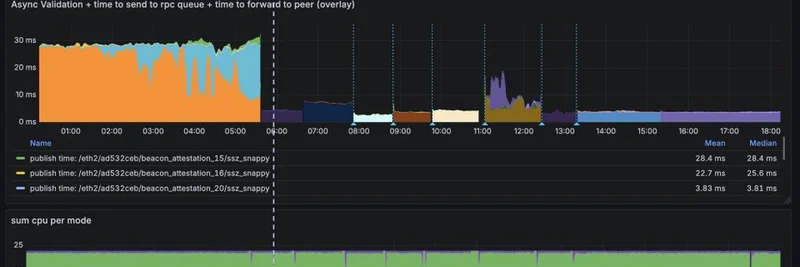Hey there, meme token enthusiasts and blockchain buffs! If you're deep into the world of crypto, especially those viral meme coins built on Ethereum, you've probably felt the frustration of network slowdowns during hype moments. Well, buckle up because there's some fresh tech news that's set to make things smoother.
In a recent X thread, Raul K from the Ethereum Foundation dropped some game-changing insights on optimizing the Prysm client—one of the key Ethereum consensus clients. Prysm helps validators keep the network humming by processing attestations, which are basically validator votes confirming the blockchain's state. These are super important for maintaining consensus and security in Ethereum's proof-of-stake system.
The team spotted a sneaky bottleneck in how Prysm handles BLS signature batching. BLS stands for Boneh-Lynn-Shacham, a fancy cryptographic method that lets multiple signatures get bundled together efficiently—think of it as packing a bunch of validator approvals into one neat package to save time and resources.
After some serious performance engineering, they tweaked the parameters and achieved what Raul calls "optimality." The result? A whopping 6x drop in per-hop propagation latency—from 30 milliseconds down to just 5ms—while keeping CPU usage super low. That's like turning a sluggish commute into a high-speed rail ride for your attestations.
Shoutout to Bharath Vedartham for the deep dive that uncovered this, and the Prysm team for merging the pull request lightning-fast. You can check out the full thread here for the nitty-gritty.
Why This Matters for the Network
Now, you might be wondering: how does this tweak ripple out to the entire Ethereum ecosystem? The team anticipates a big positive impact on overall network propagation times. To test this, they're running simulations using Shadow and simnet tools—basically virtual networks that mimic real-world conditions.
Here's a peek at their whiteboard planning for the sim:
Faster attestation spreading means quicker block finalization, less chance of orphans (those pesky discarded blocks), and a more resilient network during peak loads—like when a hot new meme token drops and everyone rushes to trade.
Ongoing Tweaks and What’s Next
The work doesn't stop there. Raul mentioned they're continuing to profile the networking libraries in depth. This helps pinpoint implementation quirks that might look like core protocol issues but are actually fixable at the code level. Expect more speed-ups as they iron out these hotspots.
For meme token creators and traders, this is golden. Ethereum's efficiency directly affects gas fees, transaction speeds, and overall user experience. With optimizations like this, launching and flipping memes could get even more seamless, helping the ecosystem grow without the headaches of congestion.
Stay tuned to Meme Insider for more updates on how blockchain tech evolves to support your favorite memes. Got thoughts on this? Drop them in the comments! 🚀


